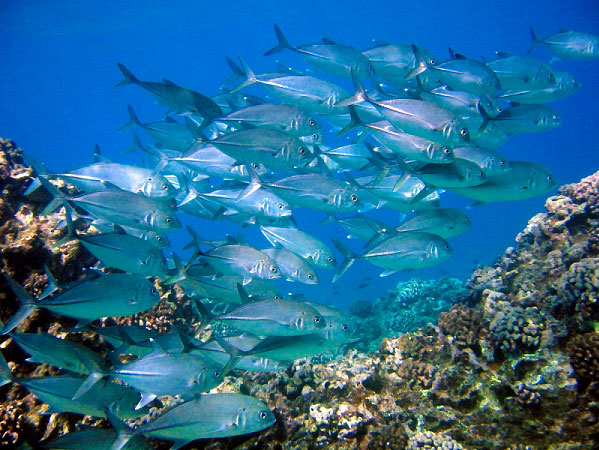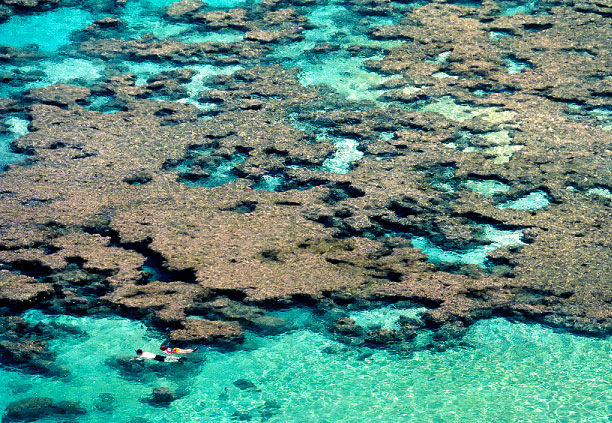HANAUMA BAY

History
Hanauma Bay Nature Preserve is among Hawaii’s most pristine natural resources, rich and vibrant with a staggering array of marine species. In 1990, the City & County of Honolulu developed a plan to protect and preserve Hanauma Bay, which by then had suffered environmental degradation caused by three million visitors per year. That plan culminated in the 2002 opening of the Marine Education Center, which welcomes visitors with a video presentation encouraging them to participate in the stewardship of the precious nature preserve. Today, up to 3,000 people visit Hanauma Bay daily.
Unlike other beaches on Oahu, Hanauma Bay is not a “beach park” intended for ocean sports activities. Rather, it is a nature preserve intended to protect a fragile marine ecosystem. Hanauma Bay is the first Marine Life Conservation District in Hawaii.
In addition to its cherished biological diversity, Hanauma Bay Nature Preserve is also an important Hawaiian cultural site. A 1952 archaeological study discovered evidence of ancient campfires and tools in a shelter cave behind the beach. Although it is unlikely that ancient Hawaiians lived at Hanauma Bay, due to the hot, dry climate and lack of fresh water, it is certain that they fished there. The bay was used by the native Hawaiian nobility as a recreation, entertainment, and fishing area.

Marine Life
Hanauma Bay is home to over approximately 400 species of fish. Fishing in the area is strictly prohibited, providing crucial protection all of the fish and invertebrate species in the waters of the bay. Also protected at Hanauma Bay are the occasional Hawaiian Monk Seals that visit the bay to bask in the sun and warm sands. Hanauma Bays is also home to many green sea turtles, which can often be seen poking their heads from the water for a quick breath of air.
Ocean Safety
Despite the idyllic landscape and calm, tranquil waters, there are safety concerns at Hanauma Bay that all visitors and residents should be aware of. Swimmers are advised to ask lifeguards about ocean conditions before entering the water, to swim only in lifeguarded areas, and to never swim alone. Children should be watched closely at all times, because ocean conditions can change quickly and drastically. Obey all posted warning signs at all times.
Education
The Hanauma Bay Marine Education Center and Theater are located near the entrance of the preserve. Visitors are given a video presentation on stewardship and safety at Hanauma Bay.
The Hanauma Bay Education Program, through the University of Hawaii Sea Grant Program, educates 800,000 visitors each year on the value of marine resources and reef etiquette, such as being careful not to walk on the live reef that is vital to the health of the preserve. The education program encourages visitors to become volunteers, to help protect the bay ecosystem, and educate other visitors.

Snorkel Rental and Facilities
For visitors without a mask, snorkel, and fins, full snorkel rentals are available at the kiosk located on the beach. Hanauma Bay also features a gift shop and food and beverage concession. Several picnic areas are located throughout the park. Locker rentals are also available on the beach.
- Restroom facilities are located near the Marine Education Center and at the beach.
- Hanauma Bay Nature Preserve is fully ADA compliant and wheelchair accessible.
Hours and Information
Hanauma Bay is closed each Tuesday to limit the number of visitors, and to perform routine maintenance at the preserve. Summer hours are Wednesday through Monday, 6:00am to 7:00pm. Winter hours run Wednesday-Monday, 6:00am through 6:00pm. In order help fund the protection of Hanauma Bay and its resources, a $7.50 admission fee is applicable for nonresident visitors over age 12.
Hanauma Bay is 10 miles east of Waikiki, located at the edge of the Hawaii Kai community. Parking at Hanauma Bay is $1.00 per vehicle. Parking is limited, and the lot often fills up early in the day. Visitors coming from Waikiki can also catch the #22 city bus (runs along Kuhio Avenue in Waikiki) to the entrance of the preserve.
